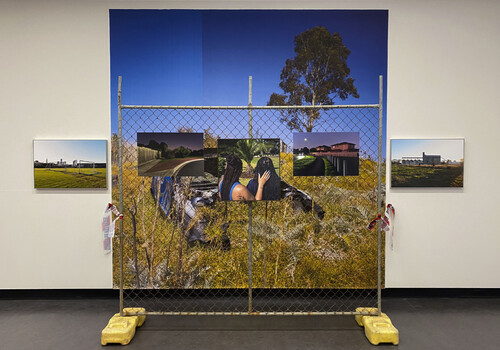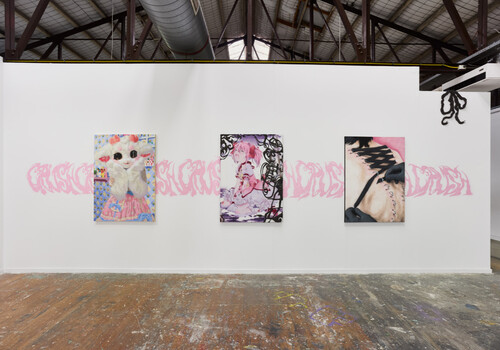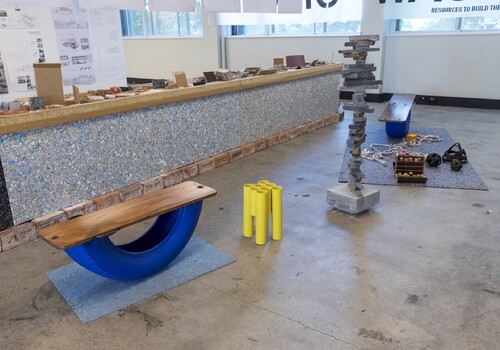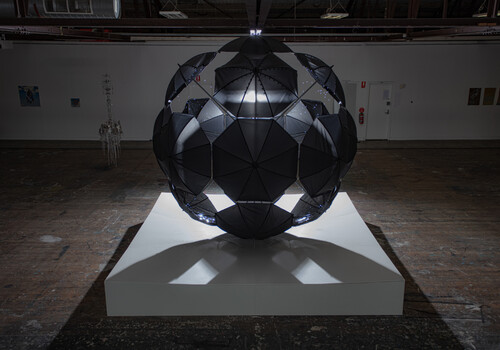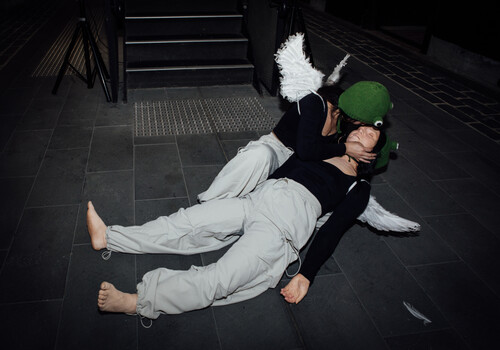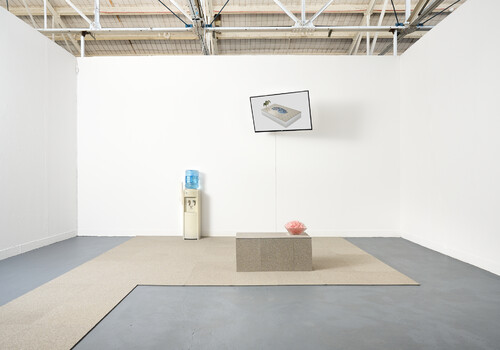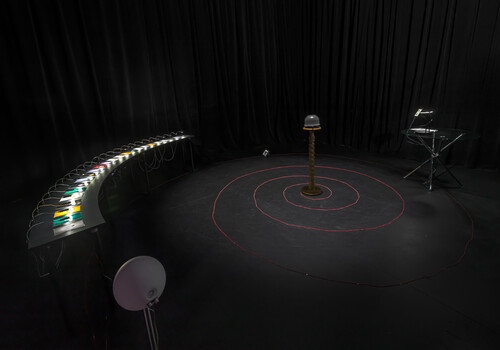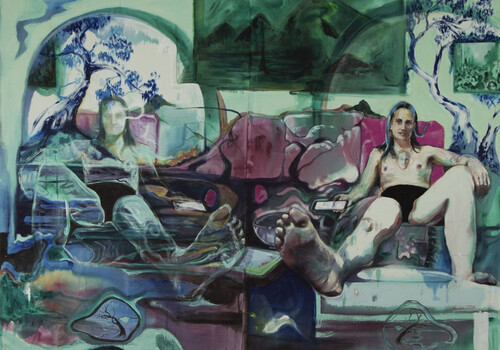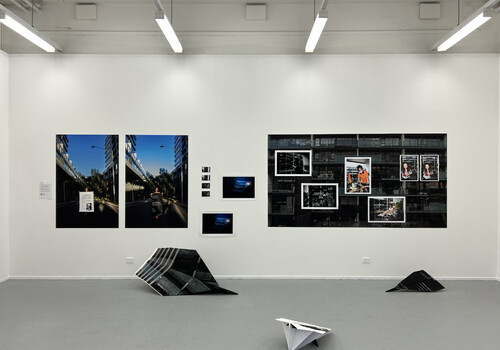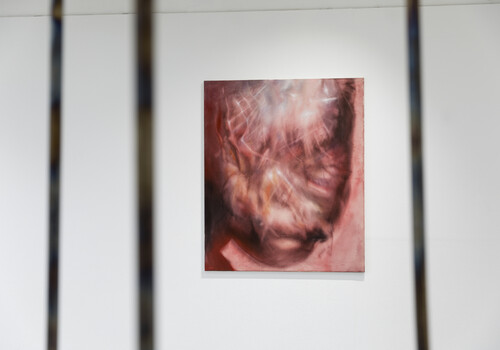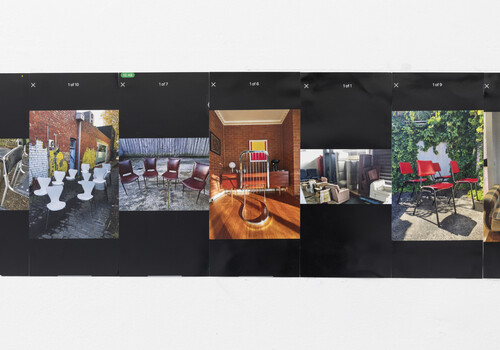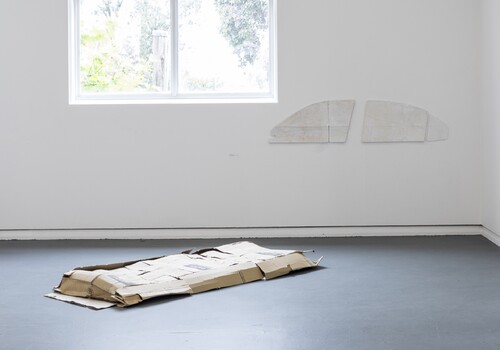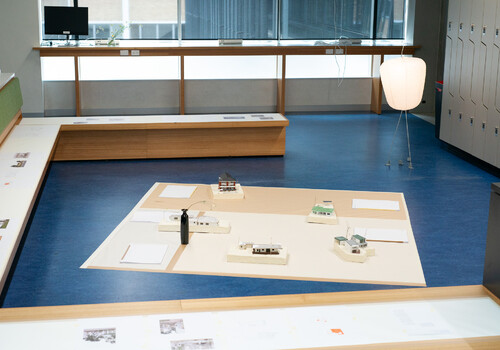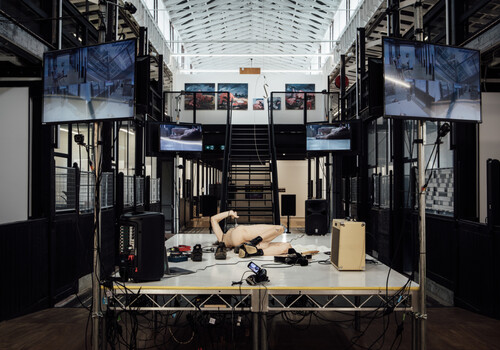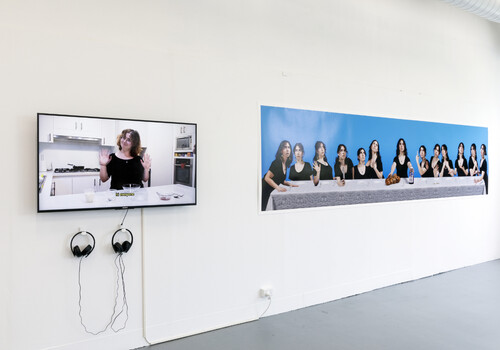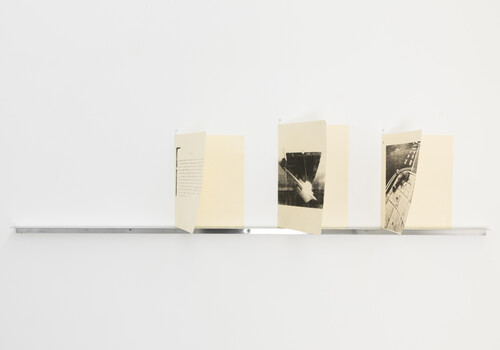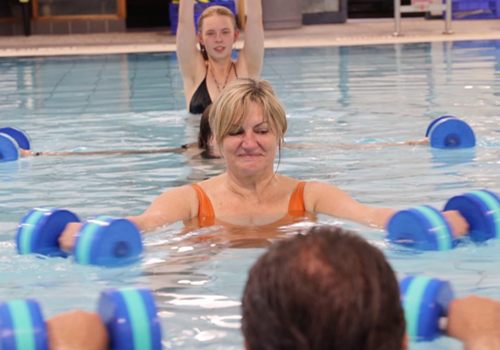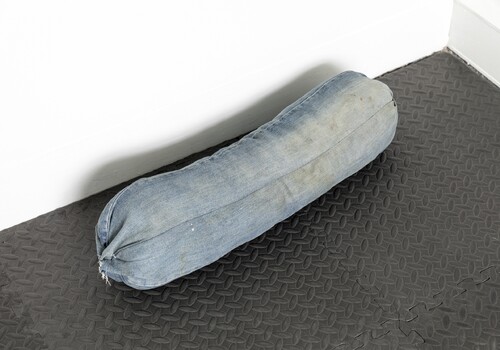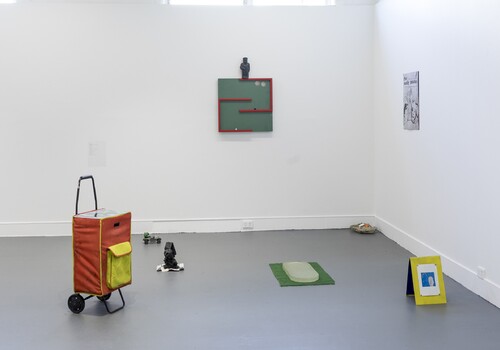Bachelor of Fine Art (Honours), MADA
By Ruby Benjamin
In a moment of turbulence beneath the water’s surface, the world above is transformed into a series of fractured spaces and undulating lines. Taking into account this veiling or obfuscation, the works by MADA Honours graduates Teagan Ramsay and Clara Joyce beckon us to question the way we perceive reality and the conventions we may subconsciously subscribe to.
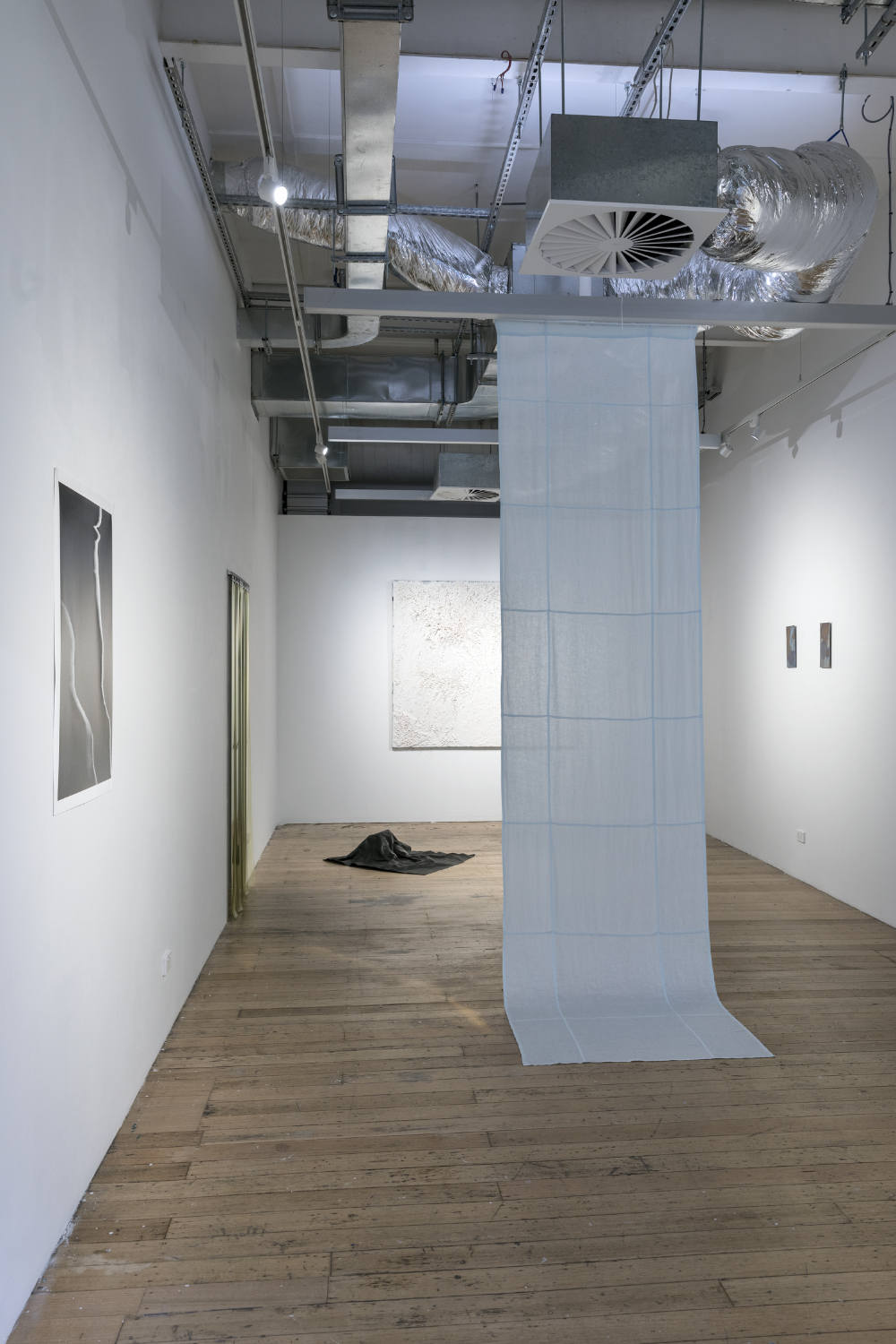
Teagan Ramsay’s curatorial project, Edging away from the optic, presents work by Alex Walker, Benjamin Bannan, Arthur Nyakuengama, Jordan Azcune, Henry Wolff and Tay Haggarty, alongside a score by Ramsay and Christopher Haugh. The exhibition reflects on the societal tendency to perceive time as linear: a string of milestones from birth to death. Ramsay’s project seeks to upend this notion, suggesting that time, much like Queer temporalities, is non-linear, fluid and less obvious. Comprising a variety of painted, sculptural, photographic and sound media, Edging away from the optic uncovers how Queer expression in art often ruptures convention and defies societal and/or artistic norms. In this way, works like Alex Walker’s Manual Distortion I (2023) seek to interrogate the idealisation of heteronormative relationships while also challenging the assumed notion of the “ideal photograph”. Similarly, Henry Wolff’s two UV pigment prints on anodised titanium interact with signs of touch and intimacy through the intricate laying of chemical, electrical and visual transformations. Meanwhile, in How Flowers Grow (2023), Jordan Azcune hints at transformation and cycles of rebirth, challenging conventional notions that tether life to a linear narrative of beginnings and endings or view sexuality as fixed and unchanging.
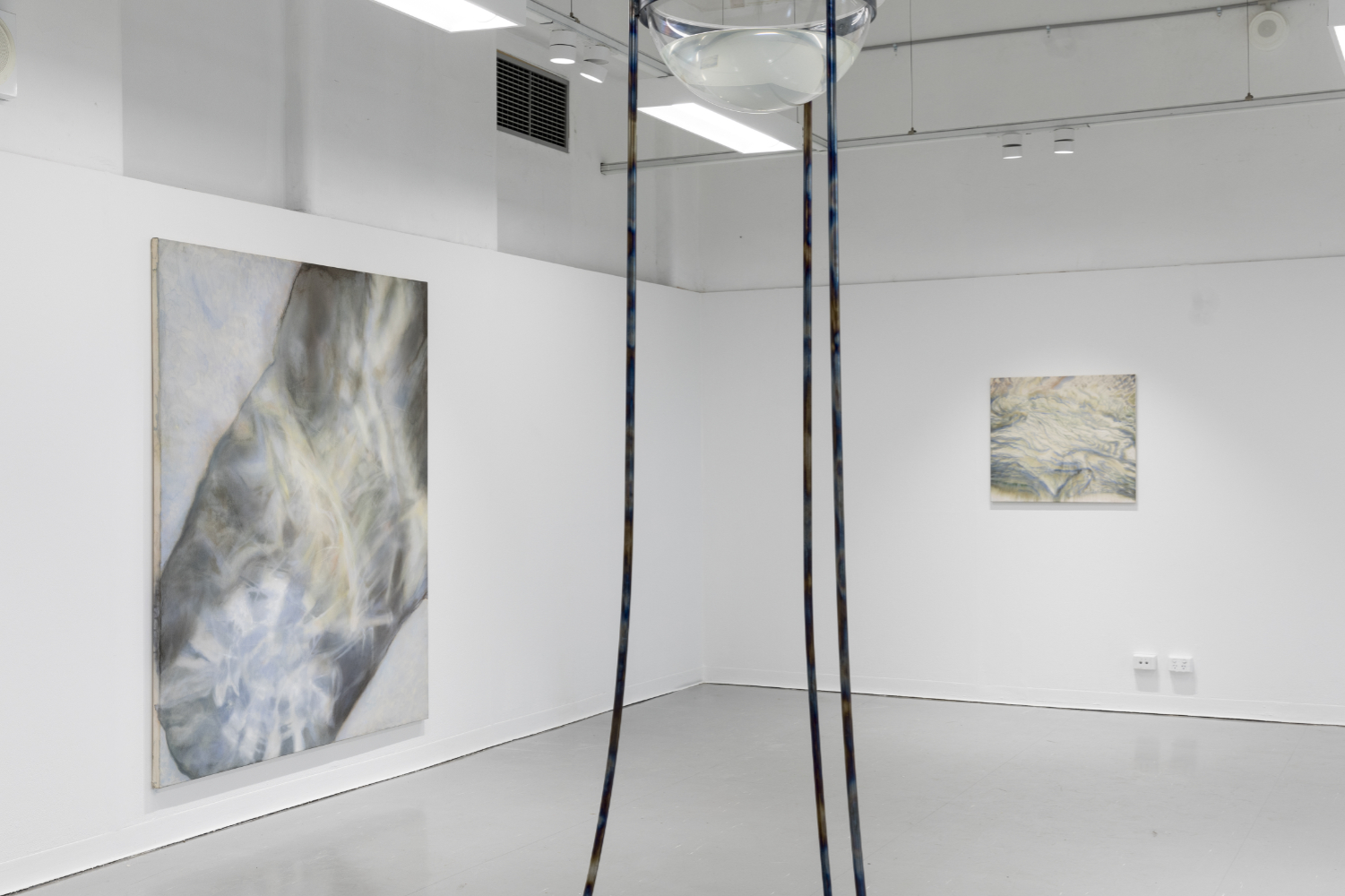
Down the hallway, Clara Joyce’s painted works Rotator Tributaries (2023) and Untitled (2023) seem to rehash one of the more pensive moments of growing up: swimming to the bottom of a pool and gazing up at the world through a veil of water. Like the currents of glistening white and ivory that sweep along a sea of muted blues and greys on Joyce’s canvases, the sun’s rays are remembered as a dance of contorted ribbons, bending and multiplying on the water’s surface. This memory is affirmed by Joyce’s sculptural piece, Water Vision Instrument (2023), which invites the viewer to gaze up through the water held in a perspex bowl fixed between three tall steel rods. The water intermittently ripples, just slightly, to reflect the vibrations caused by the gallery visitor’s footsteps. This gentle movement acts as a small reminder that the outside world is there, somewhere else beyond the veil: the muffled shouts of other children playing around the edge of the pool while you wonder what to make of it all from below the surface.
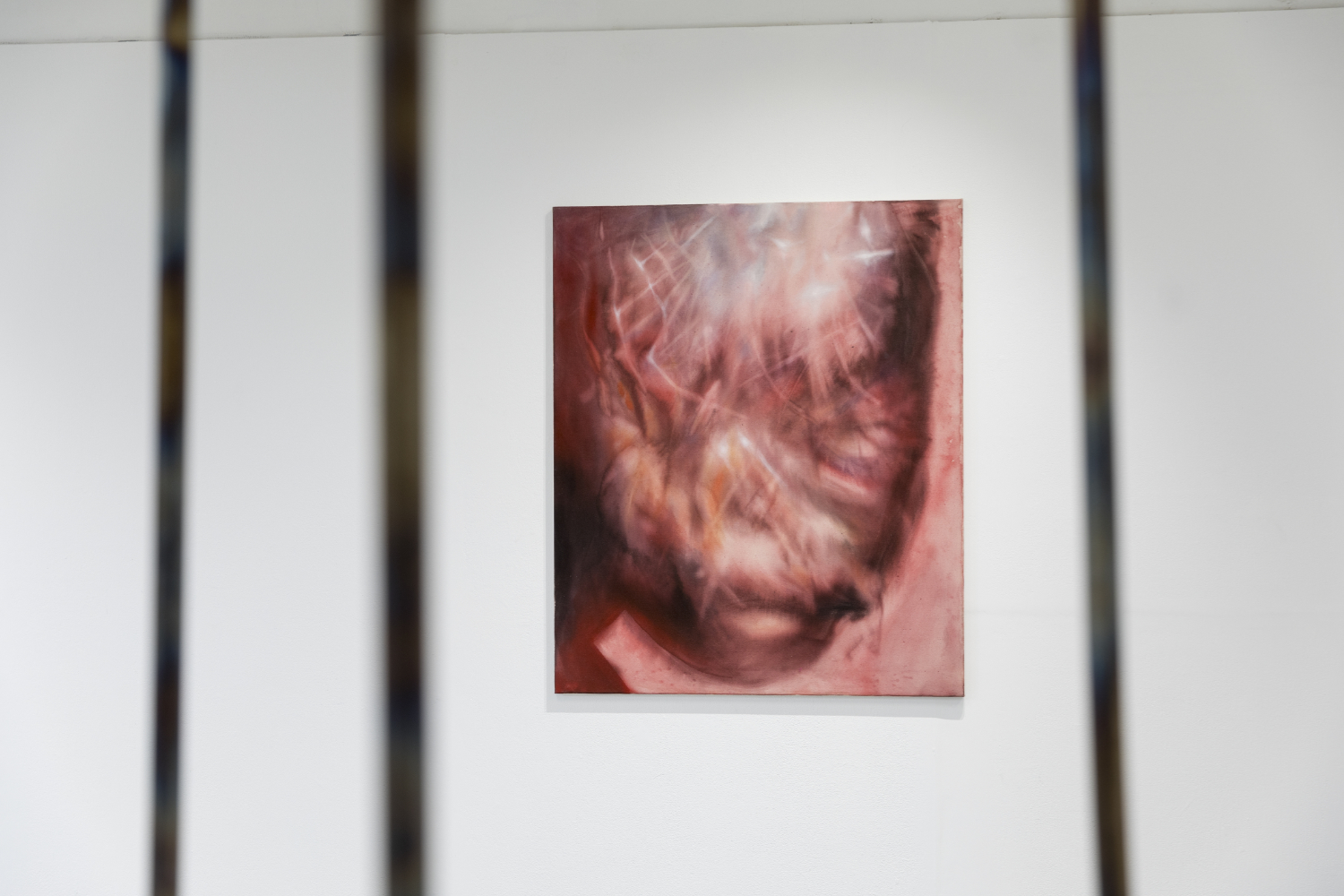
Meanwhile, distinct through its affinity for fleshy hues, Joyce’s Light Burn Blind Spot (2023) is painted with a gradient of reds and pinks that stretch from deep burgundy to rhodochrosite and blush pink. Hung alone on the left wall of the space, it hints at the act of travelling below the surface, but extends this to beneath the skin. Like Rotator Tributaries and Untitled, the painting is composed of fluid patterns and bursts of contrasting light; however, against a bed of meaty pinks, what was once reminiscent of water and a distorted reality now becomes channels of blood and walls of flesh. Or, more deeply, the web of parts that exist beneath imposed societal structures and decorum, that operate subconsciously and autonomously. Like Ramsay’s inclusion of Azcune’s work that suggests that nothing is ever static, Joyce’s work reminds us of nature’s eternal clock, constantly in flux, with no discernible start or finish.
Ruby Benjamin is an emerging curator and writer based in Naarm (Melbourne). She is currently undertaking a Bachelor of Art History and Curating and a Bachelor of Arts at Monash University.

